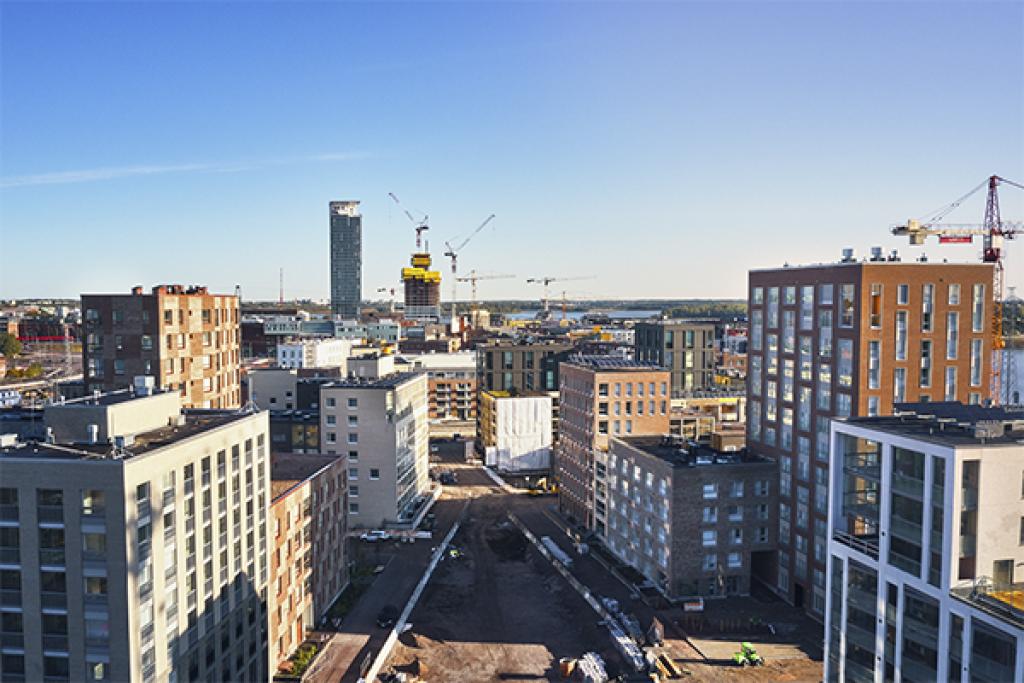
According to Helsinki’s Financial Statements for 2020, the economy of the city remained steady despite the coronavirus outbreak. The city’s cash flow from operations and investments, a key figure in describing the economic balance of growing cities, was at the same level as in the previous year. The cash flow from operations and investments was negative by 9 million euros, despite a considerably higher investment level than in the previous year. This became possible, as the cash flow financing was also better than in the previous year.
The coronavirus compensations contributed significantly to the city’s tax funding, including central government transfers to local government and the tax revenue, which was 176 million euros better than in the budget. The tax revenue was 57 million euros below the budget, while the central government transfers to local government were 234 million euros above the budget. The non-recurring coronavirus compensations for 2020 amounted to 214 million euros through the central government transfers to local government.
“The coronavirus pandemic has dealt a severe blow to Helsinki, where the service-intensive economic structure and the culture and events business have suffered badly from the crisis. As a whole, we are talking about a very complicated crisis affecting health, economy and social well-being, whose subsequent restoration work will pose an enormous challenge. This is yet another issue where the cities, with Helsinki at the forefront, will carry the biggest responsibility. Thus far, we have navigated the acute health crisis well, but when the pandemic is prolonged, its management and, above all, the multitude of negative side effects connected to it, require new knowledge and prowess, but also economic investments”, says Mayor Jan Vapaavuori.
The city’s annual contribution margin was 863 million euros, which was 228 million euros above the budget and slightly higher than in the previous year. The impact of the coronavirus on the city’s annual contribution margin remained almost neutral in 2020, but predicting the future will become harder. The coronavirus epidemic has caused a service deficit in the city services, and addressing it from 2021 onwards will increase the city’s expenditure. The financial result for the accounting period in 2020 was 497 million euros, which is 234 million euros better than in the budget.
The city’s borrowing portfolio was 992 million euros at the year-end. At the end of 2019, it was approximately 1.01 billion euros. At the end of 2020, the debt per capita was 1,508 euros.
The operating expenses increased compared to the previous year
The city's external operating income in 2020 was 1.3 billion euros, which included the sales profits from land sales and sale of buildings and shares. This was 3.4 per cent less than in the previous year, but approximately 72 million euros above the budget. The operating expenses were 4.7 billion euros. The operating expenses increased by 3.6 per cent compared to the previous year and exceeded the budget by 25 million euros.
The coronavirus outbreak caused additional expenses of 129 million euros in total. The biggest expense items were the coronavirus testing and the acquisitions of protective equipment in the social and health care division.
Rise in investment level enables city growth in upcoming years
The investment expenses in 2020 were 1.047 billion euros. Of the investments, 130 million euros came from the investment of the sales income from the Kiinteistö Oy Kalasataman Kymppi building, which was built for the urban environment division, into the joint-stock property company in question.
The investment expenses were 892 million euros with the exclusion of the city-owned companies and 762 million euros with the exclusion of the non-recurrent capitalisation of the Kymppitalo, or 19 per cent more than in 2019. During the last few years, the rise in the investment level has focused especially at construction projects in the education division, pre-construction in new housing areas and new construction and renovation of streets and traffic lanes.
“The constant growth of the city challenges our economy, and supporting the growth sustainably requires investment capacity. The health and social services reform, which is currently in parliamentary proceedings, will weaken the investment capacity of growing cities and this is a substantial problem not only for the financing of the growth of the entire national economy, but also in terms of how we can secure the availability of important services. Only a small portion of Helsinki's investments concern healthcare and social welfare and the city makes considerable investments in, for example, new housing areas and homes, day-care centres and schools and traffic links for a growing number of city residents”, Mayor Vapaavuori stresses.
Construction in Helsinki remained on a high level in 2020 and its emphasis was especially on housing development. Residential buildings covering about 750 000 square metres of surface area were under construction during the entire year. The number of housing units started and completed exceeded the housing production goal. During the year, 7,280 housing units were completed and the construction of 7,187 housing units was started.
The city's own production accounted for a 21 per cent share, or 1,530 housing units, of all the units completed. More than half of these were government-subsidised ARA rental homes for Helsingin kaupungin asunnot Oy. The rest of the housing units were right-of-occupancy homes for Helsingin Asumisoikeus Oy, as well as Hitas owner-occupied homes. The construction of 1,551 housing units started in the city's own production. The goal for the city's own production is 1,500 housing units per year.
Key figures 2020
- investments total 1,047 million euros
- annual contribution margin 863 million euros
- cash flow financing percentage in investments 85 %
- loans per capita 1,508 euros
- housing units completed 7,280
Schedule for the processing of the 2020 financial statements
The City Board processes the financial statements on Monday, 22 March 2021. The financial statements proceed to the City Council in June.
Summary of financial statements for 2020
Photo: Jussi Hellsten